.
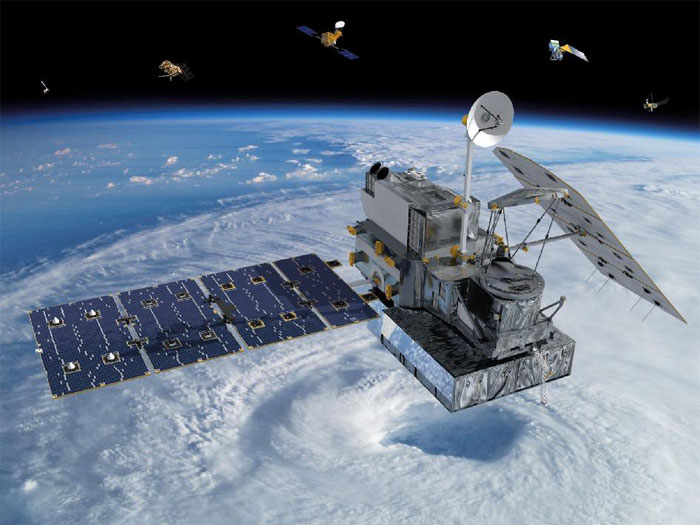
Global Precipitation Measurement (GPM) is an international satellite mission to provide next-generation observations of rain and snow worldwide every three hours. NASA and the Japanese Aerospace Exploration Agency (JAXA) will launch a “Core” satellite carrying advanced instruments that will set a new standard for precipitation measurements from space. The data they provide will be used to unify precipitation measurements made by an international network of partner satellites to quantify when, where, and how much it rains or snows around the world.
The GPM mission will help advance our understanding of Earth's water and energy cycles, improve the forecasting of extreme events that cause natural disasters, and extend current capabilities of using satellite precipitation information to directly benefit society.
The Tropical Rainfall Measuring Mission (TRMM), launched in 1997, measures moderate and heavy rainfall in the tropics. TRMM has shown the importance of taking measurements at different times of day to improve observations of weather systems and real-time monitoring of hurricanes. The GPM Core Observatory will continue this sampling strategy, but will extend the observations to higher latitudes, covering the globe from the Antarctic Circle to the Arctic Circle.
The design of the GPM Core Observatory is an advancement of TRMM’s highly successful rain-sensing package, which uses an active radar capable of providing information on precipitation particles, layer-by-layer, within clouds, and a passive microwave imager capable of sensing the total precipitation within all cloud layers. Since light rain and falling snow account for a significant fraction of precipitation occurrence in middle and high latitudes, the GPM instruments extend the capabilities of the TRMM sensors to detect falling snow, measure light rain, and provide, for the first time, quantitative estimates of microphysical properties of precipitation particles.
GPM Science and Applications
Water is fundamental to life on Earth. Knowing where and how much rain and snow falls globally is vital to understanding how weather and climate impact both our environment and Earth’s water and energy cycles, including effects on agriculture, fresh water availability, and responses to natural disasters. Since rainfall and snowfall vary greatly from place to place and over time, satellites can provide more uniform observations of rain and snow around the globe than ground instruments, especially in areas where surface measurements are difficult. GPM’s next-generation global precipitation data will lead to scientific advances and societal benefits in the following areas:
Improved knowledge of the Earth’s water cycle and its link to climate change
New insights into precipitation microphysics, storm structures and large-scale atmospheric processes
Extended capabilities in monitoring and predicting hurricanes and other extreme weather events
Improved forecasting abilities for natural hazards, including floods, droughts and landslides.
Enhanced numerical prediction skills for weather and climate
Better agricultural crop forecasting and monitoring of freshwater resources
.

Integration and Testing of the GPM Core Observatory
Engineers are building and testing the GPM Core Observatory at Goddard Space Flight Center.
Each time a new component is added to the spacecraft, rigorous testing is conducted to ensure the new components operate correctly and work effectively with existing systems.
.
Status Update: GPM Completes Spacecraft Alignments
.
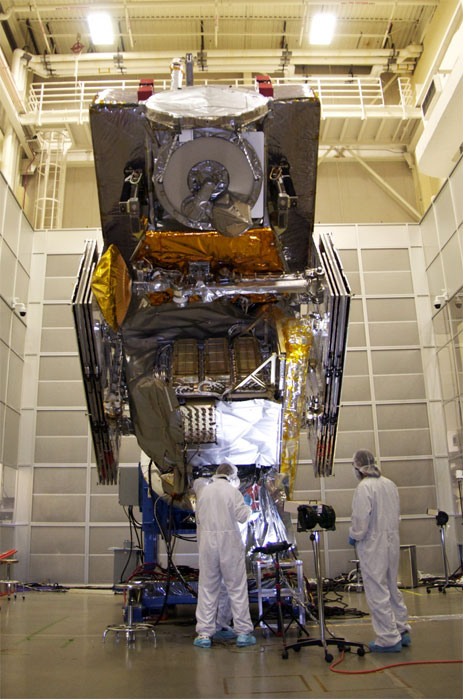
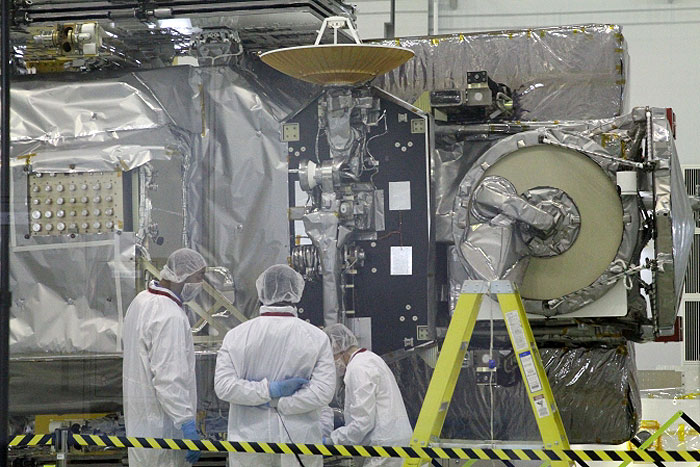
Engineers perform precision tests on the completed GPM spacecraft prior to launch - scheduled for Feb. 27.
Image Credit: NASA/JAXA
.
After a holiday break, final tests for the GPM Core Observatory resumed on Dec. 30, 2013, with alignment measurements. The spacecraft's instruments and components, such as star trackers and thrusters, are attached to the main body in specific configurations. Spacecraft alignment measurement is analogous to alignment for the wheels of a car. The Core Observatory measurements ensure that no parts have shifted during its transportation from the United States to Japan, so they will work as expected.
For the test, small cubes are placed at each part that needs checking and an instrument called a theodolite, similar to a surveyor's instrument, makes exact measurements. Measurements are taken in both the horizontal and vertical orientations of the spacecraft, in order to "see" each cube, and were completed as expected with no problems.
In addition, the GPM team has made up the time lost due to weather delays during the satellite shipment in November. They are currently on schedule for the remainder of testing, which continues with a check of the propulsion system. The GPM Core Observatory is scheduled for launch from JAXA’s Tanegashima Space Center between 1:07 p.m. and 3:07 p.m. EST on Thursday, Feb. 27 (3:07 a.m. to 5:07 a.m. Japan Standard Time on Friday, Feb. 28).
.
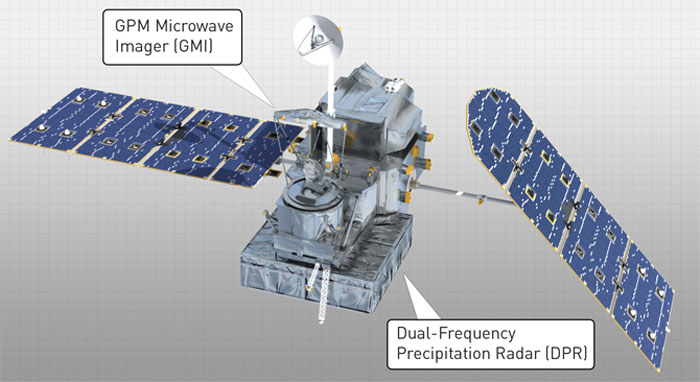
The foundation of the GPM mission is the Core Observatory satellite provided by NASA and JAXA. Data collected from the Core satellite serves as a reference standard that will unify precipitation measurements from research and operational satellites launched by a consortium of GPM partners in the United States, Japan, France, India, and Europe. The GPM constellation of satellites can observe precipitation over the entire globe every 2-3 hours. The Core satellite will measure rain and snow using two science instruments: the GPM Microwave Imager (GMI) and the Dual-frequency Precipitation Radar (DPR). The GMI captures precipitation intensities and horizontal patterns, while the DPR provides insights into the three dimensional structure of precipitating particles. Together these two instruments provide a database of measurements against which other partner satellites’ microwave observations can be meaningfully compared and combined to make a global precipitation dataset.
The Core Observatory satellite will fly at an altitude of 253 miles (407 kilometers) in a non-Sun-synchronous orbit that covers the Earth from 65°S to 65°N — from about the Antarctic Circle to the Arctic Circle. The GPM Core Observatory is being developed and tested at NASA Goddard Space Flight Center. Once complete, a Japanese H-IIA rocket will carry the GPM Core Observatory into orbit from Tanegashima Island, Japan in 2014.
The GMI uses 13 different microwave channels to observe energy from the different types of precipitation through clouds for estimating everything from heavy to light rain and for detecting falling snow. As the satellite passes over Earth, the GMI constantly scans a region 550 miles (885 kilometers) across. The Ball Aerospace and Technology Corporation built the GMI under contract with NASA Goddard Space Flight Center.
The DPR provides three-dimensional information about precipitation particles derived from reflected energy by these particles at different heights within the cloud system. The two frequencies of the DPR also allow the radar to infer the sizes of precipitation particles and offer insights into a storm’s physical characteristics. The Ka-band frequency scans across a region of 78 miles (125 kilometers) and is nested within the wider scan of the Ku-band frequency of 158 miles (254 kilometers). The Japan Aerospace and Exploration Agency (JAXA) and Japan’s National Institute of Information and Communications Technology (NICT) built the DPR.
.
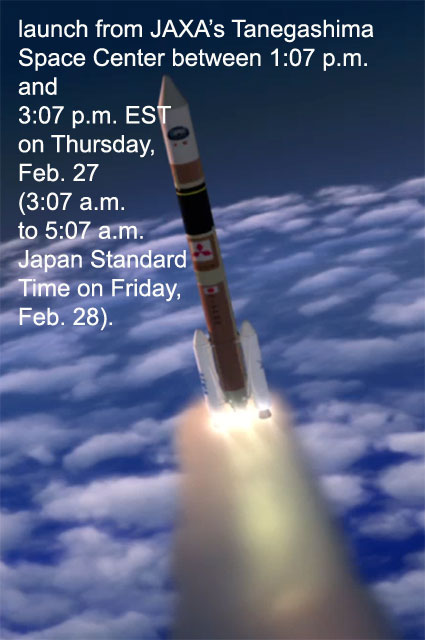
Quelle: NASA/JAXA
5047 Views
